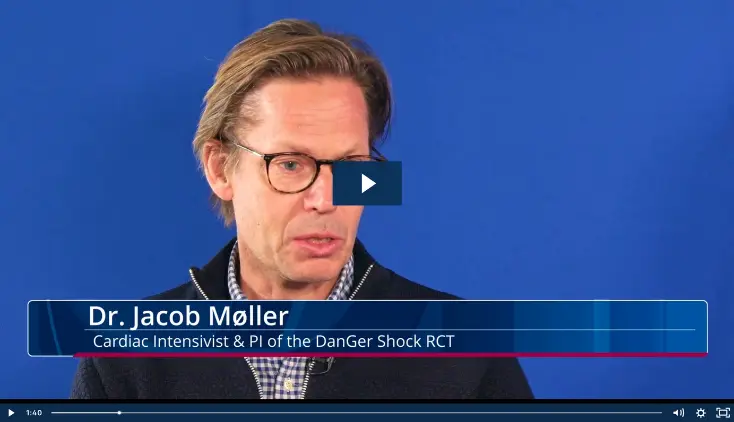Clinical Research & Data, AMI Cardiogenic Shock
Improving Survival in Cardiogenic Shock—A Propensity Score-Matched Analysis of the Impact of an Institutional Allocation Protocol to Short-Term Mechanical Circulatory Support
Sascha Ott, Daniel Lewin, Gaik Nersesian, et al.
Improving Patient Outcomes in Cardiogenic Shock with Standardized pMCS Strategy
In this paper, Sascha Ott and colleagues describe a standard operating procedure (SOP) they developed for determining the temporary mechanical circulatory support (pMCS) strategy for patients in cardiogenic shock (CS). The SOP is based on published studies, internally developed best clinical practices, and expert opinions. It is designed to improve patient outcomes by defining patients and device selection criteria. The paper presents the impact of this standardized approach on 30-day survival, 1-year survival, and hospital discharge.
Study Shows Improved Survival Rates with Standardized pMCS Approach in Cardiogenic Shock Patients
The study is a retrospective analysis of electronic health record data from consecutive patients with CS of all etiologies (including postcardiotomy CS) who were treated with pMCS at the German Heart Center in Berlin Germany between 2018 and 2021. The SOP was implemented in October of 2019 and 189 patients were treated before implementation of the SOP (pre-SOP group) and 232 patients were treated after SOP implementation (SOP group). Propensity score matching was used due to imbalances in confounding variables between pre- and post-SOP patient groups. The SOP group was further divided into an SOP-adherent group (SOP-A) and non-adherent group (SOP-NA), and the subgroups were again propensity score-matched.
How a Standardized pMCS Strategy is Redefining Cardiogenic Shock Treatment
The SOP (Figure 1) provides guidance on when to consider palliative treatment and when contraindications or other situations such as ongoing cardiopulmonary resuscitation (CPR) preclude treatment with percutaneous microaxial flow pumps. If patients do not qualify for these alternate treatment pathways, the SOP specifies support with a single-modality pMCS approach using Impella 5.5® with SmartAssist® heart pump or Impella 5.0® heart pump inserted via an axillary artery.
"Patients who were treated according to the SOP had a more than 2-fold higher likelihood of 30-day survival when compared with those not treated according to the SOP.”
Improved Patient Selection and Combination Therapies Linked to Higher Survival Rates in Cardiogenic Shock
Results of the study show higher hospital discharge rates in the SOP group (41.7% vs 29.7%) and demonstrate that treating according to the SOP was associated with an improved 30-day survival (56.9% vs 38.9%, P=0.044). In addition, hospital discharge and 1-year survival tended to be improved in the SOP-A group, but these results did not achieve statistical significance due to the low number of cases after propensity score matching.
The authors write that the increase in 30-day survival observed with implementing and adhering to the SOP can be attributed to the structured and focused approach, more appropriate patient selection for specific pMCS approaches, and combination therapies with more than one ECLS modality. They also note that lower vasoactive-inotropic scores (VIS) and lower lactate levels in the SOP group likely indicate earlier and more effective LV unloading with microaxial flow pumps. “We consider this finding one of the key results of the implementation of the revised SOP, which is also reflected in current [European Society of Cardiology] guidelines.”
Sign up for Latest Updates
NPS-3521



